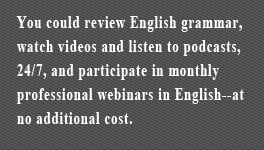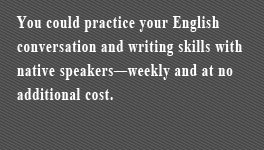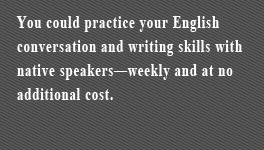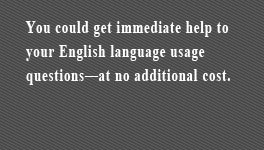
The Basic Grammar and Writing Skills for Business course contains training in both usage (grammar, punctuation, spelling, and sentence structure) and business writing (e-mail, memos, letters, reports, and other documents). The focus is on providing the business writer who has some usage problems with the instruction to make his or her writing clear, effective, and correct. The training materials include an online index for continued use of the reference tools after the course is finished. Course materials remain online for the duration of the course and after the course is finished.
Course Content
The Writing Training Portion of the Course
Letter and Memo Formats
Use a standard letter format.
Use a standard memo format.
Prepare Your Notes.
Prepare notes for your email, memo, letter, or report.
Organize the Writing.
Organize the notes.
Introduce the Content.
For emails and memos, always write a clear, meaningful subject line.
For letters, use a "Subject" or "Re" line if your company customarily uses it.
Write a clear, complete introduction.
For emails, letters, and memos, write a cordial beginning or buffer.
State the contents of the email, letter, or memo.
Write Explanations in Blocks
Write the explanations in blocks.
Keep explanations of a subject together in one block.
Check each block for focus.
Check each block for completeness.
Open each block with a statement of the contents.
Use headings to open blocks.
Bold field or data names to identify them as blocks.
Present Lists Clearly.
Create lists.
Open list blocks.
Mark the list items clearly.
Keep list items in a single list.
Keep list items in the same format.
Write Clear, Complete Explanations.
Use key words consistently.
Use full phrases to define words clearly.
Write Clear, Effective Sentences, Paragraphs, and Words.
Use paragraphs to organize information.
Write concisely.
Combine sentences to show relationships and use short sentences to be clear.
Write clear, simple, straightforward sentences.
Write strong, direct sentences.
Use words the reader will understand.
Prepare a Polished, Correct Final Draft
Use your spell checker and grammar checker.
Proofread.
Format the email to be readable.
The Grammar, Punctuation, Spelling, and Sentence Structure Portion of the Course
Course Pre-test
Lesson 1: Proofreading Principles
Lesson 2: Using Active Voice
Practice Diagnostic Test
Lesson 3: Omissions, Additions, Typos
Lesson 4: Number Accuracy
Lesson 5: Transposition Errors
Session 1 Optional Practice
Session 1 Diagnostic Test
Lesson 6: Abbreviations
Lesson 7: Word Division
Lesson 8: Number Expression
Lesson 9: Capitalization
Session 2 Diagnostic Test
Lesson 10: Commas
Lesson 11: Other Punctuation
Lesson 12: Special Punctuation
Lesson 13: Spelling
Lesson 14: Confusing Words
Session 3 Diagnostic Test
Lesson 15: Subject/Verb Agreement
Lesson 16: Pronoun Agreement
Lesson 17: Using Defined Terms Consistently
Lesson 18: Citing Sources
Session 4 Diagnostic Test
Course Post-test
 +7 (495) 969-87-46
+7 (495) 969-87-46

















